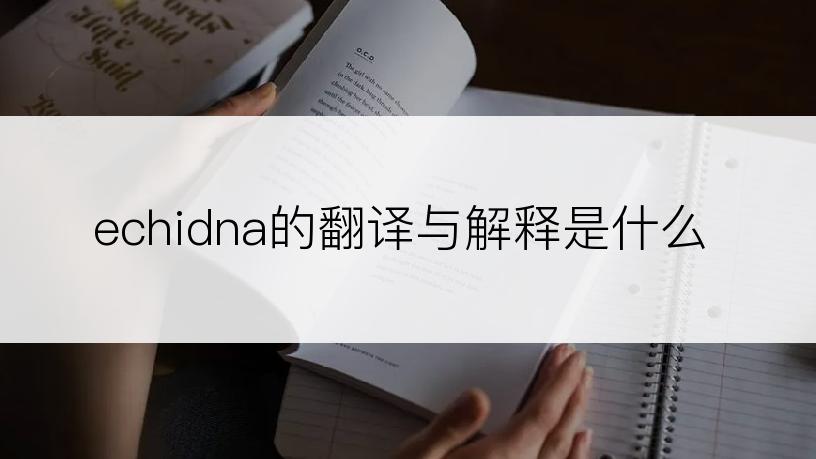echidna的翻译与解释是什么
发布于 2023-07-04 16:16:37
浏览 225

详情:
1、
echidna
2、
音标:英 [ɪ'kɪdnə] 美 [ɪ'kɪdnə]
3、
解释:
4、
n. 单孔目哺乳动物;针鼹鼠
5、
中文词源:
6、
echidna 针食蚁兽来自拉丁文echinus, 刺猬,因形似刺猬而得名。
7、
英文词源:
8、
echidna (n.)
9、
Australian egg-laying hedgehog-like mammal, 1810, said to have been named by Cuvier, usually explained as from Greek ekhidna "snake, viper" (also used metaphorically of a treacherous wife or friend), from ekhis "snake," from PIE *angwhi- "snake, eel" (cognates: Norwegian igle, Old High German egala, German Egel "leech," Latin anguis "serpent, snake"). But this sense is difficult to reconcile with this animal (unless it is a reference to the ant-eating tongue). The name perhaps belongs to Latin echinus, Greek ekhinos "sea-urchin," originally "hedgehog" (in Greek also "sharp points"), which Watkins explains as "snake-eater," from ekhis "snake." The 1810 Encyclopaedia Britannica gives as the animal's alternative name "porcupine ant-eater." Or, more likely, the name refers to Echidna as the name of a serpent-nymph in Greek mythology, "a beautiful woman in the upper part of her body; but instead of legs and feet, she had from the waist downward, the form of a serpent," in which case the animal was so named for its mixed characteristics (early naturalists doubted whether it was mammal or amphibian).
10、
双语例句:
11、
1. One of the mascots for the 2000 Olympics, in Australia, is the echidna.
12、
2000年澳大利亚奥运会吉祥物之一是针鼹鼠.
13、
来自互联网
14、
更多相关例句:
15、
One of the mascots for the 2000 Olympics, in Australia, is the echidna.
16、
2000年澳大利亚奥运会吉祥物之一是针鼹鼠.【期刊摘选】
上一篇:echelon的翻译与解释是什么
下一篇:echinoderm的翻译与解释是什么


